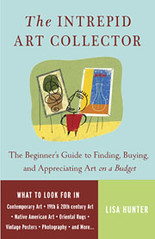One lesson we can draw from the 20th C. is that total freedom for the artist is not the path to happiness. Never have there been fewer constraints on what an artist can do, and never has the life of the artist (relative to other professions at least) been so wretched.
. . .
The drawbacks of total freedom should not surprise a physicist or an athlete. Certain mathematical problems are difficult or impossible to solve without a sufficient number of constraints. Without the constraints of rules, sports would be chaos.
We can see evidence for the longing for constraints in the most important painting movement of our time: the Painting a Day phenomenon. What is the explicit purpose of this movement? It is a pure statement of constraint. There must be one painting per day. This constraint severely limits what an artist can produce on a canvas. The enthusiasm with which artists are joining this movement demonstrates the hunger for constraints, for simplicity, for order. After all, you can’t rebel against nothing, can you?
But you don’t need to become a Painting a Day painter to have constraints. All you need to do is think about your own situation as an artist and examine what constraints you already have. And then, of course, to appreciate them and make the most of them.
One year I had no studio for a few months. I needed to work at home, so I drew in my sketchbook each day instead of painting. The work that I designed then I later painted and sold for a lot of money. The constraint of having no studio, temporarily, in fact helped me a great deal.
In order to make the most of your constraints, you need to be aware of what they are. Everyone has limitations of time, space, and talent. The particular mix that you have will influence what you do — much as will the mix of your painting medium or selection of your palette. The practical acceptance of constraints is the key to using the constraints in a positive way. It helps to remember that more opportunity and freedom would not necessarily help you.
So, let’s get to work . . .

